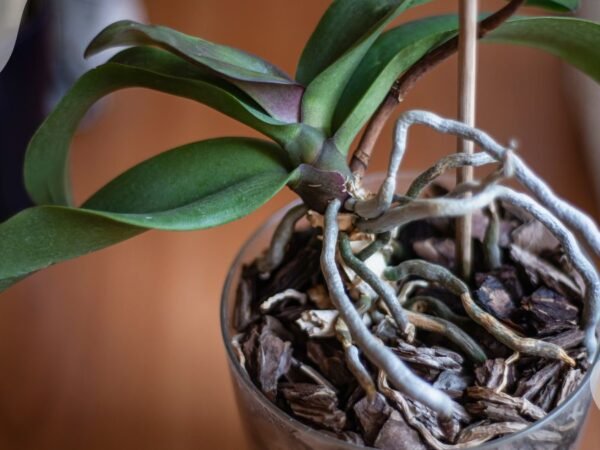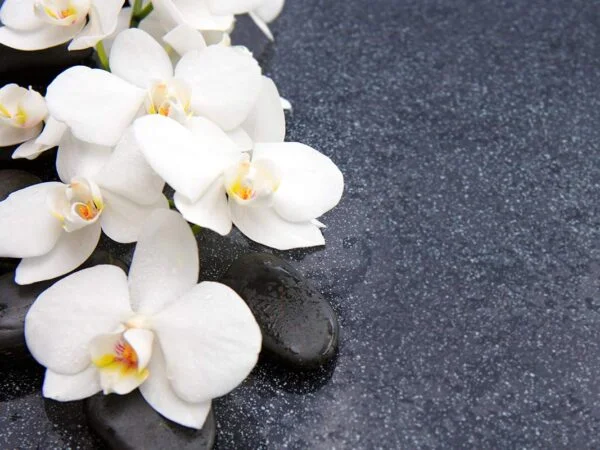Cacti, succulents, with their unique water storage abilities, require good drainage and a different approach to watering compared to other houseplants. Understanding the optimal watering frequency is crucial for the health and longevity of your cactus.
One size does not fit all. Factors such as climate, season, pot size, soil type, and species play pivotal roles in determining the ideal watering schedule for your cactus. By grasping these key elements and tailoring your watering routine accordingly, you can create an optimal environment for your beloved succulents.
Key Takeaways
-
Understand the specific watering needs of your cactus species to avoid overwatering or underwatering.
-
Monitor signs of underwatering, such as wilting or shriveling, and adjust your watering frequency accordingly.
-
Use proper watering techniques, such as allowing the soil to dry out between waterings and avoiding water accumulation in the pot's saucer.
-
Prevent root rot by ensuring proper drainage and using well-draining soil for your cactus.
-
Assess the dryness of the soil before watering by using a moisture meter or testing the soil with your finger.
-
Consider seasonal variations in watering needs, reducing watering during the dormant winter months and increasing it during the active growing season.
Understanding Cactus Watering Needs
Watering Best Practices
Cacti thrive in well-draining potting mix, allowing excess water to escape easily. Water deeply but infrequently to encourage the plant's roots to grow deeper into the soil. Different cactus species have varying water needs, so it's essential to research and understand your specific plant.
Identifying Dry Soil is crucial for determining when to water your cactus. Check the soil texture by feeling for dry, crumbly soil. Look for signs of the soil pulling away from the edges of the pot, indicating that it's time for watering. Monitor any color changes in the soil; lighter-colored soil generally indicates dryness.
Watering Frequency
Adjust your watering schedule based on seasonal changes and humidity levels in your area. During warmer months or periods of higher humidity, you may need to water less frequently as cacti can withstand longer periods without moisture. Conversely, be mindful of overwatering during cooler months when evaporation rates are lower.
Impact of Location
Understanding how climate affects watering needs is crucial for maintaining a healthy cactus. Consider sun exposure and temperature variations; outdoor cacti may require more frequent watering due to increased sun exposure and higher temperatures compared to indoor plants. Adjust your watering routine based on whether your cactus is placed indoors or outdoors.
Watering Indoor Cacti
The frequency largely depends on various factors. Indoor heating and cooling systems can affect the moisture levels in the air, impacting how often you should water your cactus. It's essential to consider these effects when determining a watering schedule for your indoor cacti.
Monitor the humidity levels indoors as they play a crucial role in indoor plant care. If the air is particularly dry due to heating or cooling, your cactus may need more frequent watering. On the other hand, if there's high humidity, you might need to adjust and water less frequently.
Adjusting watering based on air circulation is also important. Areas with poor airflow might lead to moisture lingering around your plants longer than necessary, potentially causing issues like root rot. In such cases, you'll want to be more conservative with watering.
Using suitable water types is equally important for cactus care. Room temperature water is ideal as extreme temperatures can shock the roots of succulents like cacti.
Consider using rainwater or distilled water for sensitive species of indoor plants such as certain types of succulents and cacti. These types of plants are particularly sensitive to minerals found in tap water which can cause damage over time.
It's best to avoid using softened water due to its high salt content which can harm indoor plants including succulents and cacti.
Signs of Underwatering
It's essential to recognize the signs of underwatering. Underwatering can have detrimental effects on the health and appearance of your cactus, so being able to identify these symptoms is crucial.
Recognizing Symptoms
-
Watch for yellowing or translucent skin
-
Monitor for wilting or shriveling stems
-
Be aware of black spots or soft areas on the cactus
If you notice that the skin of your cactus is turning yellow or becoming translucent, this could be an indication that it's not receiving enough water. The lack of moisture causes the cells in the plant to shrink, leading to a withered appearance. If you observe wilting or shriveling stems, it's likely due to insufficient hydration. These changes occur as a result of the plant trying to conserve water by reducing its surface area exposed to air. Furthermore, black spots or soft areas on your cactus indicate rot caused by prolonged dryness.
Proper Watering Techniques
Avoiding Mistakes
Cacti should not be watered frequently or with shallow watering sessions. Overwatering can lead to root rot and other issues. Misting is not a substitute for proper watering; it doesn't provide the necessary moisture to the roots. Cacti shouldn't be watered on a fixed schedule without considering their individual needs.
It's crucial to understand that cacti have different watering requirements than most plants due to their ability to store water. Overwatering can cause irreversible damage, leading to wilting, yellowing, or even rotting of the plant.
Refraining from frequent and shallow watering sessions is vital in preventing issues related to poor drainage and overhydration. Instead of sticking strictly to a calendar-based schedule for watering your cactus, observe its condition and adjust your approach accordingly.
Watering Depth
To avoid overwatering, ensure that excess water drains out from the bottom of the pot after each session. This helps prevent water accumulation at the bottom of the pot, which could lead to root rot.
When considering waterings, always aim for moisture penetration into the root zone rather than just moistening the top layer of soil. The depth of watering should correspond with both pot size and plant age; larger pots may require more water while younger plants need less frequent deep watering sessions.
Good drainage is essential.
Preventing Root Rot in Cacti
Root Rot Causes
Overwatering is a common cause of root rot in cacti. When the soil is constantly wet, it deprives the roots of oxygen, leading to decay. Poor drainage can exacerbate the issue by allowing water to accumulate at the bottom of the pot. This creates a waterlogged environment that encourages root rot. Furthermore, fungal infections can also contribute to root rot in cacti.
Prevention Tips
To prevent root rot in cacti, it's crucial to allow the soil to dry out between waterings. This ensures that excess moisture doesn't linger and suffocate the roots. Choosing pots with proper drainage holes is equally important as it allows any excess water to escape, preventing water from pooling at the bottom. Another proactive measure is applying fungicide preventatively to protect against potential fungal infections.
Assessing Dryness Before Watering
It's crucial to assess the dryness of the soil before watering. One way to do this is by feeling the top inch of the soil for dryness. If it feels completely dry, then it may be time to water your cactus.
Another method is using a moisture meter to gauge soil dryness. This tool can provide an accurate reading of how moist or dry the soil is, helping you determine if your cactus needs watering. Observing how quickly the soil dries out after watering is also essential. If the soil dries out rapidly, your cactus may require more frequent watering.
Cacti are adapted to survive in arid environments with minimal water availability, so overwatering can lead to root rot and other issues. By assessing these indicators of soil dryness before watering, you can ensure that your cactus receives just the right amount of water.
Duration Without Water
Most cacti can survive weeks without water. Some species, like the Saguaro cactus, can withstand months without water due to their ability to store water in their stems and roots. The survival time frame varies based on species and environmental conditions such as humidity levels and temperature.
Cacti are adapted to arid environments with low humidity, which allows them to retain moisture for extended periods. Their thick stems and reduced leaf surfaces minimize water loss through transpiration. As a result, they require less frequent watering compared to other types of plants.
In regions with high humidity levels, cacti may need less frequent watering because the air is already saturated with moisture. However, during dry seasons or in arid climates where humidity is low, cacti may need more regular watering to compensate for the lack of atmospheric moisture.
Certain factors influence how long a cactus can go without water: its species, age, size, pot size (if potted), soil type and quality (well-draining vs. retaining moisture), exposure to sunlight (more sun increases evaporation), and ambient temperatures.
Factors such as the plant's stage of growth also play a role; younger cacti typically require more frequent watering than mature ones since their root systems are still developing.
Seasonal Watering Considerations
During the winter months, cacti require less frequent watering due to their dormant state. Decreasing the watering frequency is crucial to prevent overwatering, which can lead to root rot. Since cacti are sensitive to cold drafts, it's essential to be cautious of any chilly air near them.
In addition to reducing watering, it's important to ensure that cacti are not exposed to cold drafts during the winter. Cold drafts can cause stress and damage the cactus. To compensate for shorter days in winter, increasing light exposure for your cactus is beneficial as it aids in photosynthesis and helps maintain its overall health.
Cactus Care Tips for Optimal Health
Light Requirements
Cacti require ample sunlight for healthy growth. Different cactus species have varying light needs, so it's essential to adjust the light exposure based on the specific type of cactus you have. For instance, desert cacti thrive in direct sunlight, while jungle cacti prefer indirect or filtered light. It's crucial to protect your cacti from intense midday sun, as this can scorch their delicate tissues.
Understanding its light requirements is vital. The amount of water a cactus needs depends largely on its exposure to sunlight and temperature conditions. If your cactus receives plenty of bright light and heat, it will require more frequent watering compared to those kept in shadier or cooler environments.
Soil Preferences
Choosing the right soil mix is crucial for proper cactus care. Opt for well-draining sandy soil mixes that allow excess water to pass through quickly without retaining moisture around the roots. Consider adding materials such as perlite or gravel to improve drainage further. These amendments help prevent waterlogged soil that could lead to root rot.
It's important not only how much but also what kind of water your plant gets. For example, if you use tap water with high mineral content, these minerals can accumulate in the soil over time and harm your plants. To avoid this issue consider using distilled or rainwater instead.
Pot Selection
Selecting an appropriate pot greatly influences how often you should water your cacti. Choose pots with drainage holes at the bottom which allow excess water to escape freely. Opt for shallow pots rather than deep ones because they prevent excessive retention of water around the roots. Terracotta pots are ideal for growing cacti due to their breathability and ability to control moisture levels effectively.
Final Remarks
Congratulations! You've now mastered the art of watering your cacti like a pro. By understanding their specific needs, signs of underwatering, and proper techniques, you're well-equipped to keep your prickly friends happy and thriving. Remember, it's all about finding that delicate balance – not too much water, but just enough to keep them content. Think of it as finding the sweet spot for a perfect cup of coffee – too little and it's bitter, too much and it's watered down. Your cacti are just like that – they have their own unique flavor.
Now that you're armed with this knowledge, go ahead and put it into action. Observe your cacti closely, adjust your watering routine as needed, and watch them flourish under your care. And who knows, maybe soon you'll be the go-to cactus whisperer among your friends! Keep nurturing those green beauties and enjoy the rewarding experience of seeing them thrive.
Frequently Asked Questions
How often should I water my cactus?
Cacti generally require watering every 2-4 weeks, but the frequency can vary based on factors like the type of cactus, pot size, and environmental conditions. It's important to check the soil dryness before watering to prevent overwatering.
What are the signs of underwatering in a cactus?
Signs of underwatering in a cactus include shriveled or wrinkled skin, yellowing or browning of lower leaves, and slow growth. Adjust your watering schedule if you notice these signs to ensure your cactus stays healthy.
How do I assess if my cactus needs water?
Before watering your cactus, gently press your finger into the soil about an inch deep. If it feels dry at that depth, it's time to water. However, if it still feels moist or cool, hold off on watering for a few more days.
Can overwatering cause problems for my cactus?
Yes! Overwatering can lead to root rot in cacti. To prevent this issue, make sure that excess water is able to drain from the pot and avoid letting the plant sit in standing water for prolonged periods.
Are there any seasonal considerations when watering a cactus?
In winter months when most species go dormant and experience reduced light levels and cooler temperatures indoors, reduce both frequency and volume of waterings significantly compared with spring/summer growing seasons.
Image Source: Paid image from CANVA




